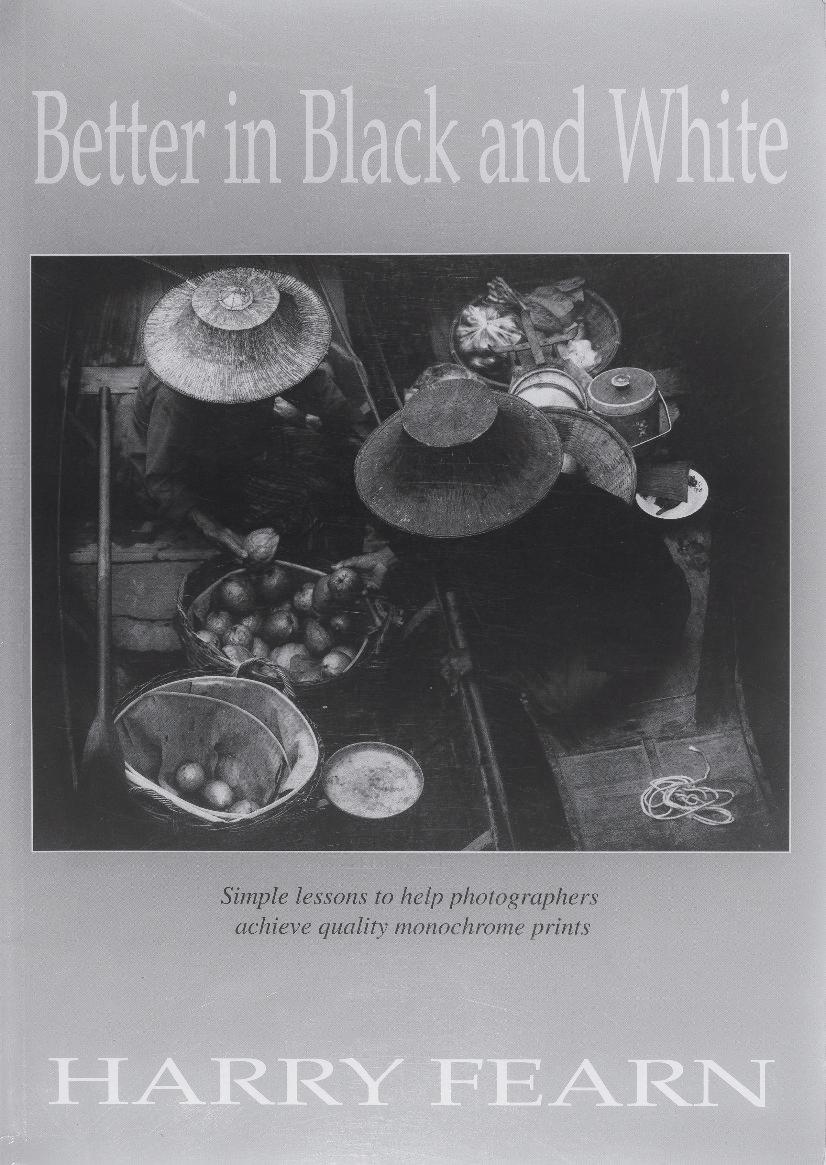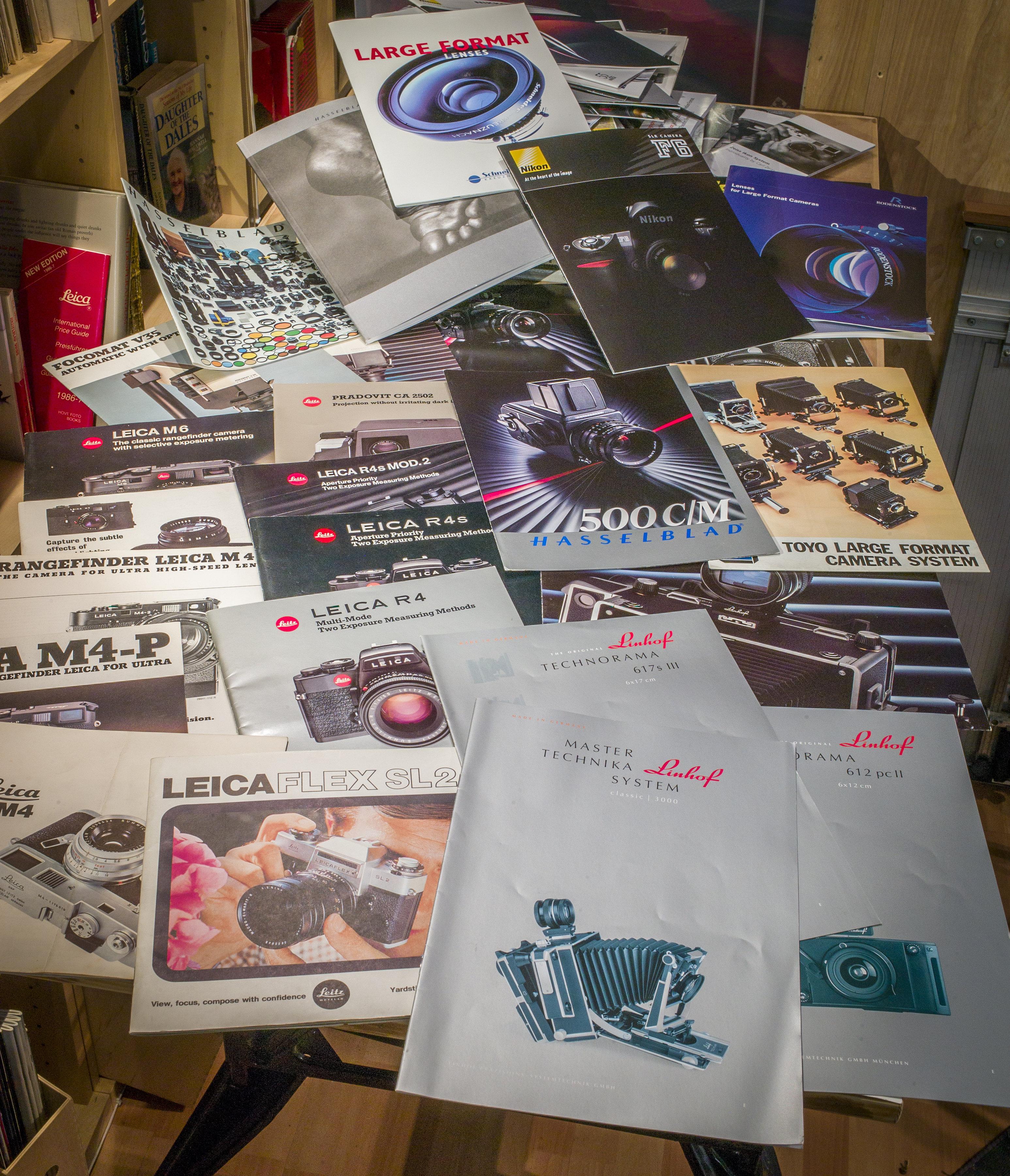
5 minute read
Book Reviews The Darkroom edited by Eleanor Lewis Better in Black and White by Harry Fearn ARPS
Book Reviews
Darkroom
Lustrum Press: edited by Eleanor Lewis Available second hand and online only price around £20.00 This issue initiates a series of articles peeking into darkrooms. The idea came from both this book and early Black and White Photography magazines which did the same. The book takes us into the darkrooms of many famous photographers including Wynn Bullock, Ralph Gibson, W.Eugene Smith (and I thought my darkroom was chaotic!) and George Tice to name but a few. It gives a real and full insight into the working practices of these leading photographer/ darkroom practitioners. The complete disclosure aspect of the book, particularly the table summary of equipment and materials given at the end of each photographers chapter adds significantly to the books strength. It is a book that makes me review my darkroom and how I use it – but is also inspirational. Should it be on your shelf? Definitely ! Got to go now. Off to my darkroom to make some prints….
Better In Black and White
Creative Monochrome Publication written by: Harry Fearn ARPS Available second hand online £26.00
This is a simple book describing what can be a complex subject – the Zone system. It is also a lot of money for a rather thin publication. However as I got into the book I found that it is nearer to an easily digestible photography course than a book to read per se. My experience with the Open University, which I found to be excellent, was due in part to the very fine printed workbooks, which made learning complex subjects easy and enjoyable and I had a similar experience with this book. I think this aspect of the book makes the price much more acceptable.

The book does come with a warning: “This book explains the Ansel Adams ‘Zone System’ method of working, which may seriously improve your photography. Good photography can be addictive, leading to huge expenditure of time and money,”
You have been warned.
RPSAnalogueis your journal
Have your work featured in Spotlight and win a prize
Send us from six to twelve of your images, scanned or digitally copied and output as 72ppi Jpgs by email or on CD. If sending them on a CD, be sure to write your name and email address or phone number on the disk. If your work is chosen, you will be contacted in order to arrange for high resolution images to be sent to us. If your work is to be published, we would like a short caption for each image and a paragraph about yourself and your photography. Please be patient as your work may not be published in the next issue of RPS Analogue but might be held in reserve for a future issue. We will contact you before publishing your work.
When your work is published, you will be awarded a free film voucher by our sponsor Analogue Wonderland. Your details will not be passed to any third party. Congratulations go to this edition’s contributor, Roger Harrison who recieves a film voucher worth £25. Write an article for RPS Analogue
If you have something inspiring to say to analogue photographers please send us a short synopsis of your article and some Jpg images by email. It could be about the benefits you have experienced from analogue photography, a technique you could share, an outing with camera and film or really anything of interest. Please do not send the full article in the first instance. If your idea is accepted, we will contact you to discuss it further.
Your favourite camera
Do you have a favourite camera or one that is a bit out of the ordinary? If so, tell us all about it.
Your darkroom
Darkrooms are important to analogue photographers but can also present problems. Do you have a permanent, fully equipped darkroom or do you have makeshift set up in a cupboard or bathroom? Helpful ideas would be welcome.
Letters
If you would like to express an opinion in this journal please send it by email. The usual conditions for letters to journals will apply, for example the editor will have the final say in what will be published. The email address for all contributions and correspondence is: analoguenews@rps.org. If you intend to send something by post, please contact us by email first. Analogue photography - Who can play? When discussing the entry requirements for our aborted exhibition we reviewed what we would consider to be a legitimate analogue print for entry, and by inference the type of photography that qualifies as analogue within our group generally. We summarize as below. All images taken on film to produce the fol‐lowing outputs: • Silver prints either trade or self processed • Digital prints either trade or self processed • Digital files from scans for PDI sharing • Slide Transparencies • Alternative print processes, including
Wet Plate Images captured digitally to produce the fol‐lowing outputs: • Silver prints either self or trade processed • Alternative print processes Non Analogue images: Images that are outside the scope of our group and not eligible for exhibitions or sub‐mission in our published gallery are digitally captured images that are then digitally printed or used in PDI sharing. It does give the widest possible scope to the definition of the analogue process and as such is intended to be as inclusive as possible,


According to camerarescue.org based in Finland the number one searched for secondhand camera on their international website is the classic Leica M6. It is a definitive 35mm rangefinder camera and the benchmark by which others are judged. Every analogue home should have one. If you cannot afford one there are cheaper high performance rangefinders as illustrated in this edition of Analogue. Or just own the sumptuous brochure to get your Leica fix.







